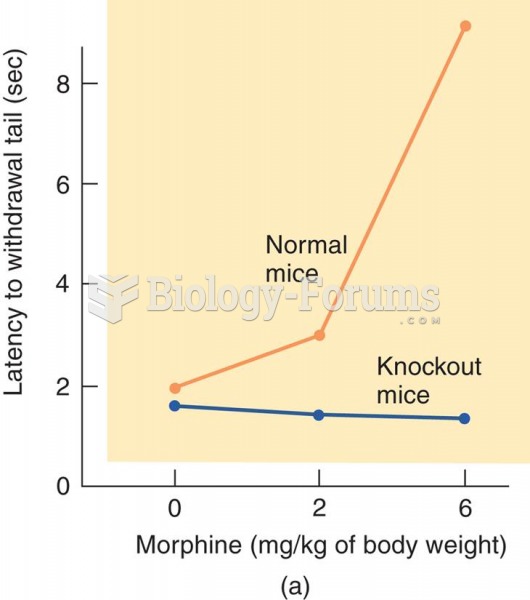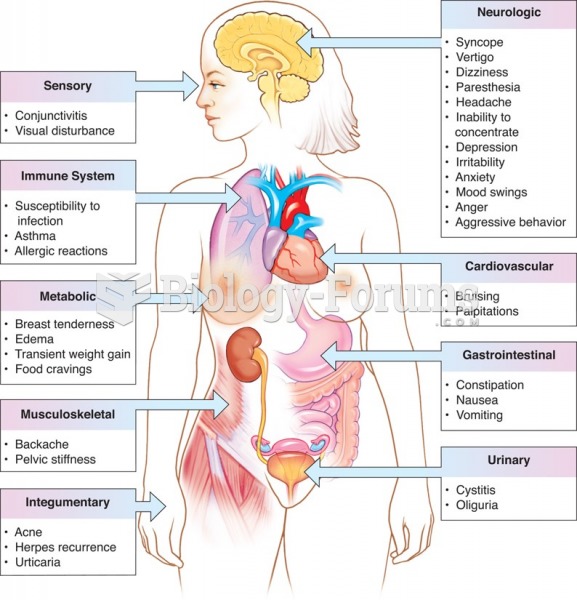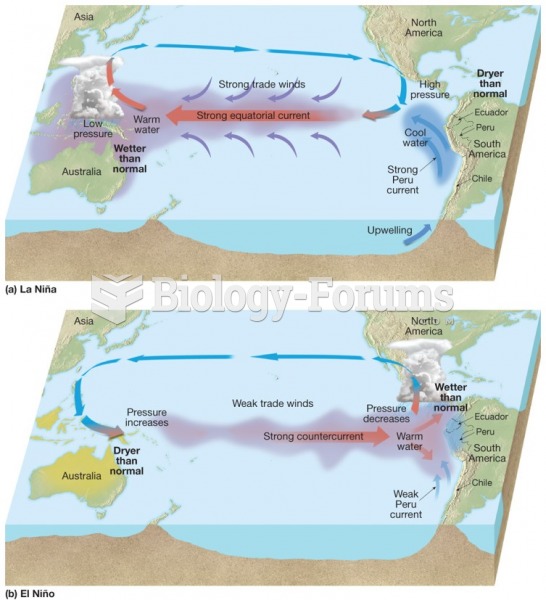Answer to Question 1
The atmospheric and oceanic conditions during an El Nio-Southern Oscillation (ENSO) warm phase occur when the high pressure along the coast of South America weakens, reducing the difference between the high- and low-pressure regions of the Walker Circulation Cell. This, in turn, causes the southeast trade winds to diminish. In very strong El Nio events, the trade winds actually blow in the reverse direction. Without the trade winds, the Pacific Warm Pool that has built up on the western side of the Pacific begins to flow back across the ocean toward South America, creating a band of warm water that stretches across the equatorial Pacific Ocean. The warm water usually begins to move in September of an El Nio year and reaches South America by December or January. During strong to very strong El Nios, the water temperature off Peru can be up to 10C (18F) higher than normal. In addition, the average sea level can increase as much as 20 centimeters (8 inches), simply due to thermal expansion of the warm water along the coast. As the warm water increases, sea surface temperatures across the equatorial Pacific, temperature-sensitive corals are decimated in Tahiti, the Galapagos, and other tropical Pacific islands. In addition, many other organisms are affected by the warm water. Once the warm water reaches South America, it moves north and south along the west coast of the Americas, increasing average sea level and the number of tropical hurricanes formed in the eastern Pacific. La Nina events are associated with sea surface temperatures and weather phenomena opposite those of El Nino. Indian Ocean monsoons, for instance, are typically drier than usual in El Nino years but wetter than usual in La Nina years.
Answer to Question 2
Tropical cyclones are huge rotating masses of low pressure characterized by strong winds and torrential rain. They are the largest storm systems on Earth, though they are not associated with any fronts. What powers tropical storms is the latent heat of evaporation and condensation of water. A tropical cyclone begins as a low-pressure cell that breaks away from the equatorial low-pressure belt and grows as it picks up heat energy in the following manner. Surface winds feed moisture (in the form of water vapor) into the storm. When water evaporates, it stores tremendous amounts of heat in the form of latent heat of evaporation. When water vapor condenses into a liquid (in this case, clouds and rain), it releases this stored heatlatent heat of condensationinto the surrounding atmosphere, which causes the atmosphere to warm and the air to rise. This rising air causes surface pressure to decrease, drawing additional warm moist surface air into the storm. This air, as it rises and cools, condenses into clouds and releases even more energy, further powering the storm and continuously repeating itself as a feedback loop, each time intensifying the storm. These conditions are found during the late summer and early fall, when the tropical and subtropical oceans are at their maximum temperature. Even though hurricanes sometimes form outside hurricane season, the official Atlantic basin hurricane season is from June 1 to November 30 each year. These dates conventionally delimit the period when most tropical cyclones form in the Atlantic basin. When hurricanes are initiated in the low latitudes, they are affected by the trade winds and generally move from east to west across ocean basins. Hurricanes typically last from 5 to 10 days and sometimes migrate into the middle latitudes. Destruction from hurricanes is caused by high winds and flooding from intense rainfall. Storm surge causes the majority of a hurricane's coastal destruction. In fact, storm surge is responsible for 90 of the deaths associated with hurricanes. The majority of the world's tropical cyclones are formed in the waters north of the equator in the western Pacific Ocean. These storms, called typhoons, do enormous damage to coastal areas and islands in Southeast Asia.






